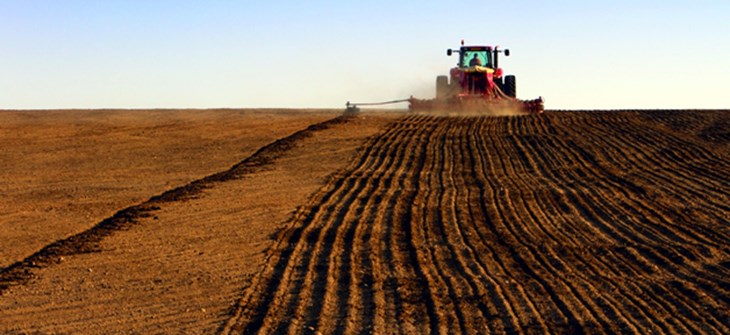Published 26/02/2014

Compassion in World Farming Chief Executive and Farmageddon co-author, Philip Lymbery, was talking to a radio interviewer recently, who found it hard to accept that intensive high-input, high-output rearing of farm animals is inefficient. It underscored how decades of production-orientated rhetoric have left some with the lasting impression that industrial agriculture is somehow a miracle. In this blog, Philip explains how industrial farming is more mirage than miracle.
I guess it must come as something of a shock when the argument is put – as in Farmageddon – that, far from being efficient, industrial agriculture wastes food, making it harder to feed a growing global population.
Intensive agriculture measures its success on the amount of a crop produced per hectare. That in itself is not unreasonable. However, this isn’t all of the picture, especially when a third of the world’s cereal harvest and much of its soya is fed to industrially reared animals. A staggering 70 percent of the available food calories are then wasted through conversion to meat and milk.
A recent scientific study by researchers at the University of Minnesota, USA, looked at just this problem. It argues that the real measure of success for farming in the 21st century should be the number of people “nourished per hectare” rather than the “tonnes per unit of land” measure that has driven farm industrialisation for decades.
We live in a world where more than half the entire food harvest is wasted through being left to rot, thrown away or fed to industrially reared animals. The current food system produces enough for at least 11 billion people, if only we didn’t waste so much of it. That’s considerably more than the 9.6 billion people expected on the planet by mid-century. The biggest single area of food waste is in feeding perfectly good food to farm animals.
The production-orientated approach to agriculture is outdated. It is solving the problems of the 1950s – when there wasn’t enough food to go round. Now, in a world of shrinking resources and plentiful food, the real question is how do we make more food available for more people?
The Minnesota researchers hit the nail on the head; for this, we have to consider “how the world’s crops are allocated” and whether it is “possible to feed more people with the current levels of crop production”. After all, land suitable for growing arable crops is finite and much of it is already being used.
Having switched thinking from the “standard” intensive definition of productivity – tonnes per hectare – to a more people-orientated approach – the number of people actually fed per hectare of cropland – the researchers run their calculations. What they find is that existing cropland could feed an extra 4 billion people.
Farmageddon comes up with a strikingly similar conclusion. When writing with Isabel Oakeshott, I point out that when a quarter of the world’s usable land surface is pasture, it makes no sense at all to take farm animals off the land and into factories. In doing so, the system becomes dependent on feeding the animals with arable crops like cereals and soya that could be nourishing people.
The practical alternative is simple; rearing farm animals on the land, as it should be; converting things that people can’t eat, like grass, into things which people can eat; meat, milk and eggs. In this way, farm animals contribute to the global food basket. When they’re locked in factory farms, the hard truth is that they take food away.
